This is an external contribution from one of EuropeOn’s closest partners, SolarPower Europe.
SolarPower Europe’s EU Market Outlook for Solar Power 2021-2025 shows another record year for the European solar sector.
In 2021, the European Union has seen an estimated 25.9 GW of new solar PV capacity connected to the grid, an increase of 34% over the 19.3 GW installed in 2020. This growth makes 2021 the best year in European solar history, breaking the decade-long record of 21.4 GW installed in the EU in 2011.
The solar forecast beyond 2021 is similarly bright. In the most-likely Medium Scenario, this latest report predicts that European solar will continue its strong growth, reaching a cumulative capacity of 327.6 GW by 2025 (up to 672 GW by 2030). This means the EU solar fleet will double within four years, from the 164.9 GW installed today.
At national level, two new countries have achieved GW scale installations levels in 2021, with Greece returning to the list and Denmark joining for the first time ever. The new additions bring the GW club membership to seven, with projections expecting this group to grow to 12 by 2025.
Germany continues to lead the pack on overall installations, expecting to install 5.3 GW by the end of 2021 – representing an 8% growth since 2020. In a surprise for the sector, the Netherlands has overtaken Germany for installations per capita, reaching 765 W/capita, 42% up from 2020.
Aristotelis Chantavas, President of SolarPower Europe, said, “European solar continues to outshine expectations. 2021 was the best year yet for the sector, beating a decade-long record to connect 25.9 GW to the grid. We estimate that Europe’s solar fleet will double by 2025 to 327.6 GW. To fully realise the bright potential of European solar, together with policymakers we must address the remaining barriers to the growth of the industry, whether through permitting or grid bottlenecks.”
This latest report updates last year’s progress review of EU member states’ National Energy and Climate Plans (NECPs), finding that all EU member states are on track to reach their national solar targets by 2030 or earlier. Notably Estonia and Latvia have already reached their 2030 solar goals, while Poland, Ireland, and Sweden will do so through 2022.
Walburga Hemetsberger, CEO of SolarPower Europe said, “We are pleased to revise upward the projections of solar growth, yet again. If we are to learn from these findings, it is only realistic to be more ambitious. More Member States are already reaching their NECP solar targets – it is obvious that we can, and must, push those goals further.
Hemetsberger continued, “To take the most cost-effective path for EU climate neutrality in 2050, we need a minimum 45% renewables target for 2030. If all other EU countries follow the same level of ambition as Germany, Europe would already be set to achieve the 870 GW of solar that would fulfil the necessary 45% target by 2030.”
In anticipation of the notable European PV manufacturing redevelopment expected in coming years, this is the first edition of SolarPower Europe’s European Market Outlook to feature the ‘Solar PV Manufacturing Map’. The map tracks production capacities across Europe for major segments along the PV value chain and will capture the industries expansion into GW-scale projects.
Michael Schmela, Head of Market Intelligence at SolarPower Europe said, “The forecast is bright for European solar, but an industry can only develop sustainably with a comprehensive vision of its supply chain. With the continued growth of the sector, and the sustained EU leadership in future solar cell technologies, opens an opportunity to redevelop PV manufacturing in Europe. We need to re-establish 20 GW of solar PV manufacturing by 2025, this will be critical to increase the stability of supply chains, while creating added value and highly qualified new jobs under the European Green Deal.”
